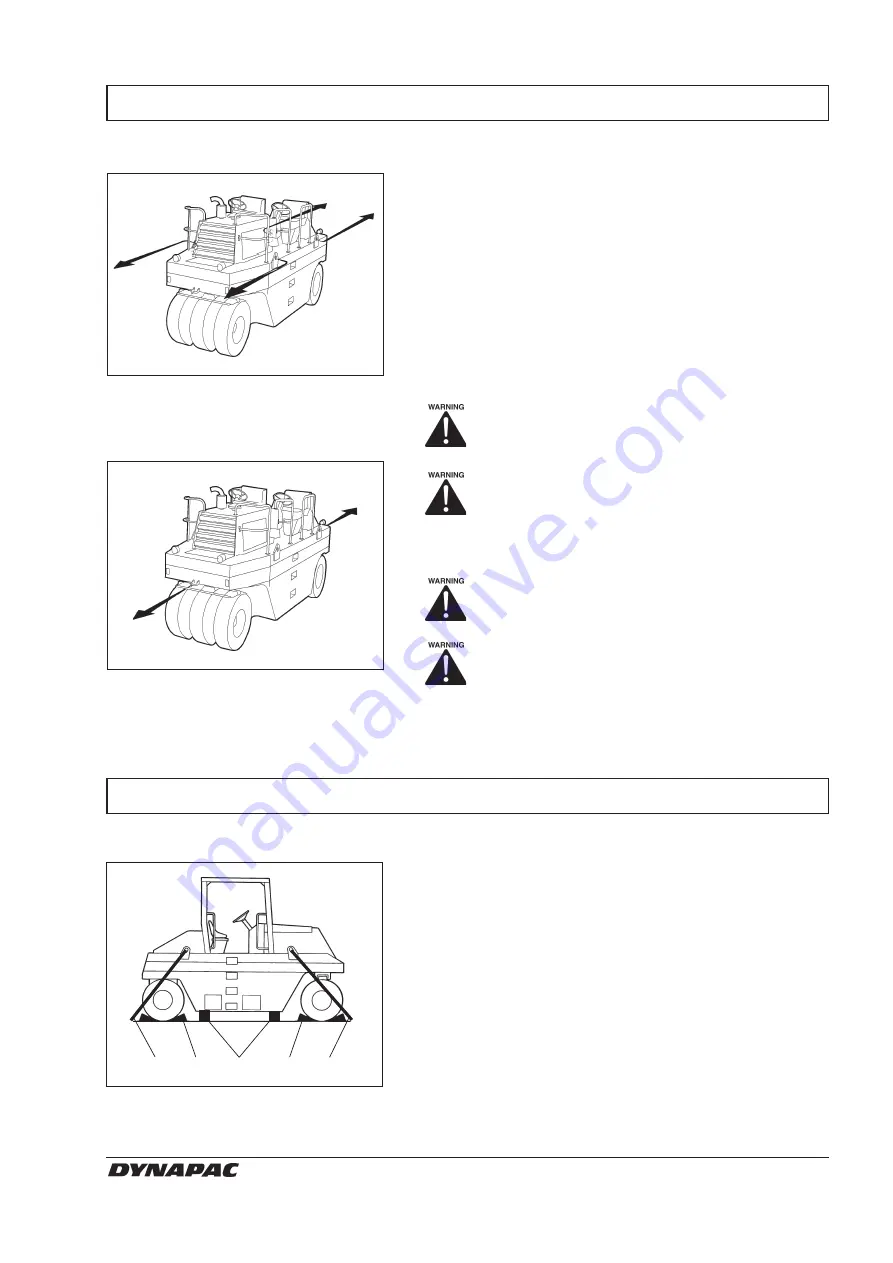
25
CP221/271 O221EN5
TOWING
Towing
The roller should normally not be towed because of the
risk of damaging components in the transmission as a
result of insufficient lubrication.
If towing cannot be avoided, put the forward/reverse
control in neutral and use a tow bar dimensioned for the
purpose, maximum pulling force 125 kN (62.5 kN each
lifting hole) (28,100 lbs force—14,050 lbs force in each
lifting hole).
The cardan shaft shoud be dismounted if the vehicle
must be towed more than 100 m (90 yds).
If dismounting the cardan shaft, attention
requires to that the parking brake is totally
put out of operation.
If the brake pressure as well is missing,
towing in slopes can be highly dangerous.
The traction vehicle's brakes must be
dimensioned to manage the high unbraked
machine weight.
If not a safe towing can be accomplished,
transportation must be done according to
transportation instruction.
Maximum towing speed may not exceed 3
km (1.9 miles) per hour.
Fig. 32 Towing
TRANSPORTATION
Chock the wheels (1) and secure the chocks to the
transport vehicle.
Block up under the frame (2) to avoid damage to the
machine.
Clamp down the roller with lashing straps (3) at all four
corners; decals indicate the fixing points.
3
1
3
Roller prepared for transportation
Fig. 34 Transporting a roller
1. Chock
2. Block up
3. Lashing wire
1
2
Pulling eyelet
Fig. 33 Pulling eyelet
The roller can be fitted with a pulling eyelet. The pulling
eyelet is for pulling objects weighing no more than
2,400 kg (5.292 lbs). The pulling eyelet is not intended
for towing/retrieval.
















